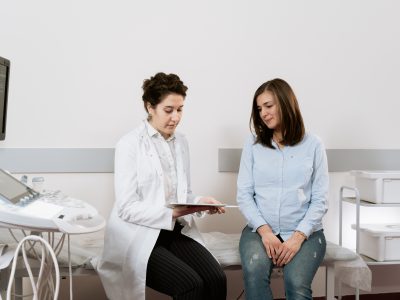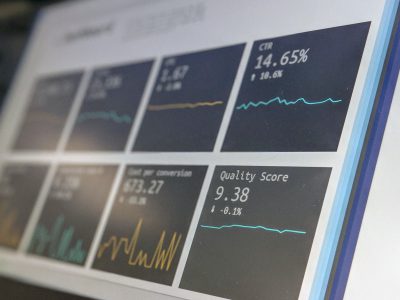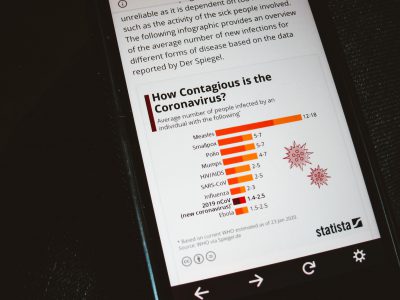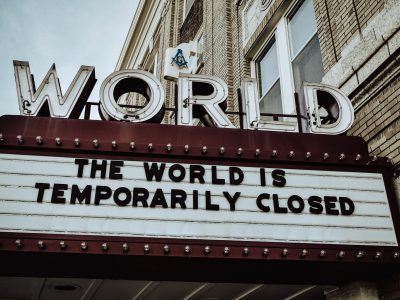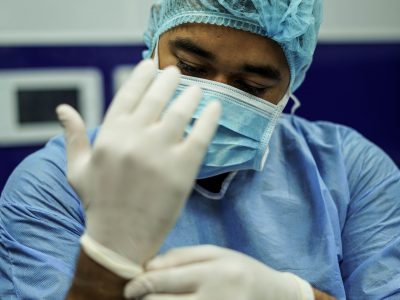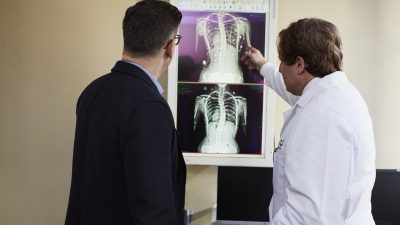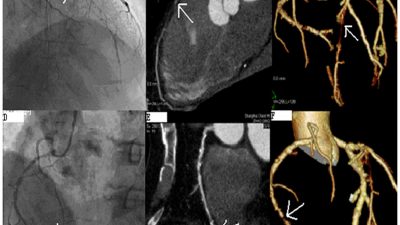While most cardiology clinicians are still working hard on the front lines of the COVID-19 health crisis and may not have much time to speculate, much of what we’re learning in the day-to-day of managing this pandemic has far-reaching implications for the future of quality cardiology care. This Quality Matters news brief asks the question, what does quality cardiology post COVID-19 look like? What is the new normal for quality cardiology?
As COVID-19 Spreads, US Cath Labs Ponder Fibrinolytics for STEMI – TCTMD
While this may seem very much like a here-and-now consideration, it has deep implications for the future of quality care. This feature in TCTMD asks the question that while business-as-usual may not be possible during the COVID-19 crisis, should the inferior approach of a fibrinolytic-based strategy for STEMI be a “reasonable consideration” for fast reperfusion of patients? “In March, the American College of Cardiology (ACC) Interventional Council and the Society for Cardiovascular Angiography and Interventions (SCAI) urged cath labs to balance the risk of staff exposure and patient benefit: while primary PCI should be considered the gold standard, fibrinolytics could be considered,” reads the article.
Some experts suggest that in the current circumstances, fibrinolytics may be the optimal strategy. ““The superiority of primary PCI over lytics is contingent upon us meeting that 90-minute door-to-balloon time,” said Dharam Kumbhani, MD. “If you’re getting into delays of hours before reperfusion, even though you’ve done the primary PCI, I’m not sure if that would have been as good [compared] with giving lytics early.” Pinak Shah, MD, however, cautions that many centers are not using lytic therapy enough. “I don’t think most centers in the US are using enough lytic therapy to completely feel comfortable with the decision. I can imagine most emergency room doctors and many cardiologists aren’t comfortable with the decision,” Shah said. Read more »
Beyond the here-and-now quality implications, the story raises further questions with implications for cardiology post COVID-19. Should providers and organizations maintain proficiency and capacity in this plan B for STEMI? Should health care organizations maintain a pandemic protocol in case global health crises become a new normal? What do you think? Leave a comment »
COVID-19 is Normalizing Telehealth and That’s a Good Thing – Fast Company
Bob Kocher, MD, who was selected to the state of California’s coronavirus testing task force wrote this commentary on how COVID-19 is normalizing telehealth, and why that’s a positive for the future of health care. Many cardiology clinicians have been forced to get up to speed with telehealth in relatively short order, as emergency Medicare rules and world-wide stay-at-home orders greatly increased demand and reimbursement for telehealth services.
The crisis has kickstarted demand, but greater patient satisfaction may mean that a preference for telehealth visits will stick. “Habits that we form now will grow into preferences and default behaviors, and patients won’t want to return to a pre-COVID-19, less-convenient form of in-person healthcare,” he writes. He also speaks to new technology facilitating this shift in cardiology post COVID-19, for example. “Specialty medicine will also go virtual, particularly specialties such as cardiology, where high blood pressure and other heart conditions can be monitored through connected devices with more precision than quarterly office-based blood pressure checks and EKGs.” The benefits? Doctors can spend more time caring for patients, clinicians can get a more comprehensive understanding of patients’ home life, virtual visits make group care between specialists possible, and the approach should increase quality while lowering cost. Read more »
COVID-19: Optimizing Heart Failure Management in the Patient’s Home – Cardiac Rhythm News
Dr. Kocher touches on the quality potential of connected devices in cardiology, and just last week we came across this article that further suggests the potential for new technology to optimize heart failure management. “Thankfully, technology options now exist to provide high quality heart failure management within the patient’s home,” writes Michael Kiernan, MD, MSc, director of Cardiac Assist at Tufts Medical Center. “Our team at Tufts Medical Center was excited to be one of the first implanting US sites for the pivotal PROACTIVE-HF trial using the novel Cordella pulmonary artery (PA) sensor (Endotronix). In addition to the sensor, the Cordella system incorporates vital sign data from non-implantable sensors including weight, blood pressure, blood oxygen, heart rate, and patient recorded symptoms. Each day, the patient collects and shares data in less than five minutes, providing a comprehensive clinical picture over time.”
Although elective surgeries are currently on hold, Kiernan points to the obvious benefit and potential of these remote monitoring techniques both for collecting better and more comprehensive clinical information in addition to facilitating quality telehealth. Read more »
Cardiac Rehab During COVID-19: Telehealth, Unpaid Heroes Step Up to Help at Home – TCTMD
Unfortunately, the recent, emergency expansion of Medicare reimbursement to telehealth services did not extend to in-home cardiac rehabilitation. “There’s no reimbursement for rehabilitation at home, no mechanisms for the processes that we have to be covered in any way,” said Randal J. Thomas, MD, of the Mayo Clinic. Many clinicians are forging ahead, despite not having a clear path for reimbursement. “We recognized very quickly that this was not a good situation for these patients and that reimbursement or no reimbursement, we needed to manage them at home,” said Jonathan H. Whiteson, MD, of NYU Langone Rusk Rehabilitation.
Of course, we hope that the larger trends surrounding this emergency, in addition to the hard work of these professionals, will ultimately bring reimbursement to cardiac rehab services which are crucial to outcomes for many patients, and for which resources and guidelines do exist. “Thomas, who has researched home-based cardiac rehab for 25 years, said fortunately, there are good resources available to help navigate this new world. His group has created protocols that are being freely shared with anyone who needs them and are available on the American Association of Cardiovascular and Pulmonary Rehabilitation (AACVPR) website,” reads the article. Read more »
Re-opening Facilities to Provide Non-emergent Non-COVID-19 Healthcare: Phase I – Centers for Medicare & Medicaid Services (CMS) Recommendations
Last but certainly not least, we take a short-term look at cardiology post COVID-19 and the recommendations released on Sunday regarding a “Phase I” re-opening of facilities to non-emergent care. What are the considerations for organizations looking at resuming care as normal in States that have passed Gating Criteria? This document lists considerations from PPE to workforce availability, sanitation protocols and testing capacity. Read more »




